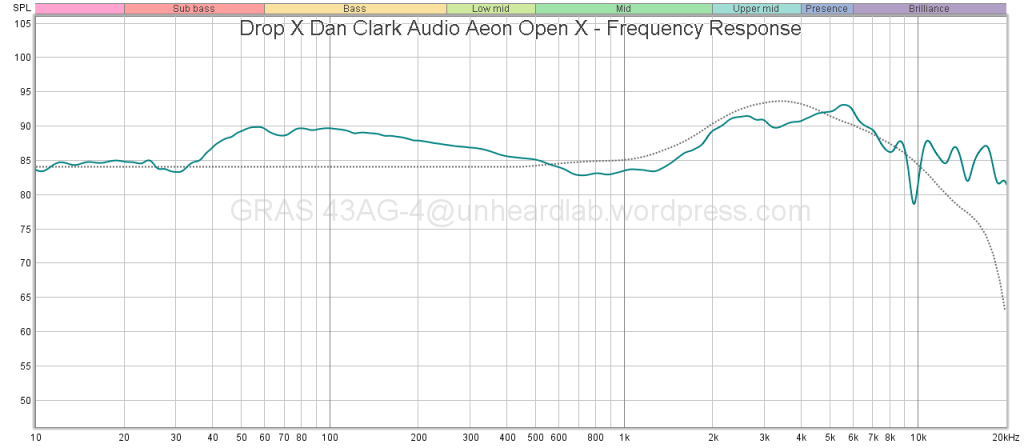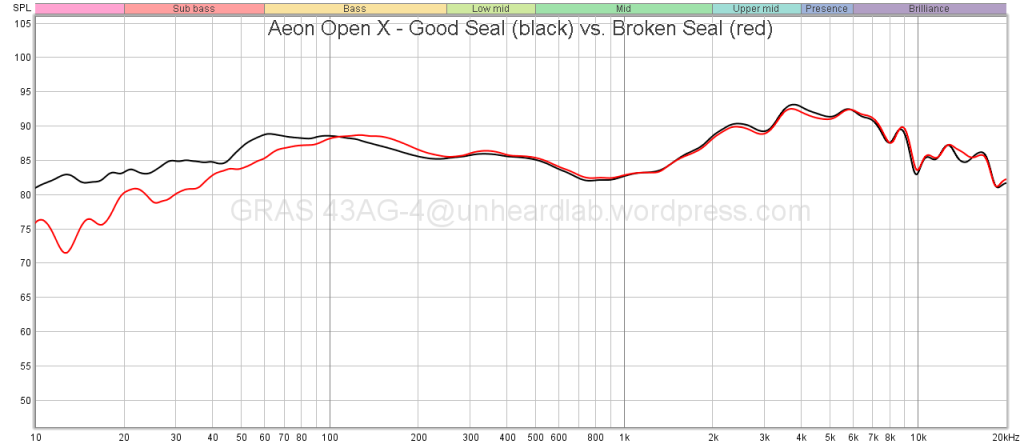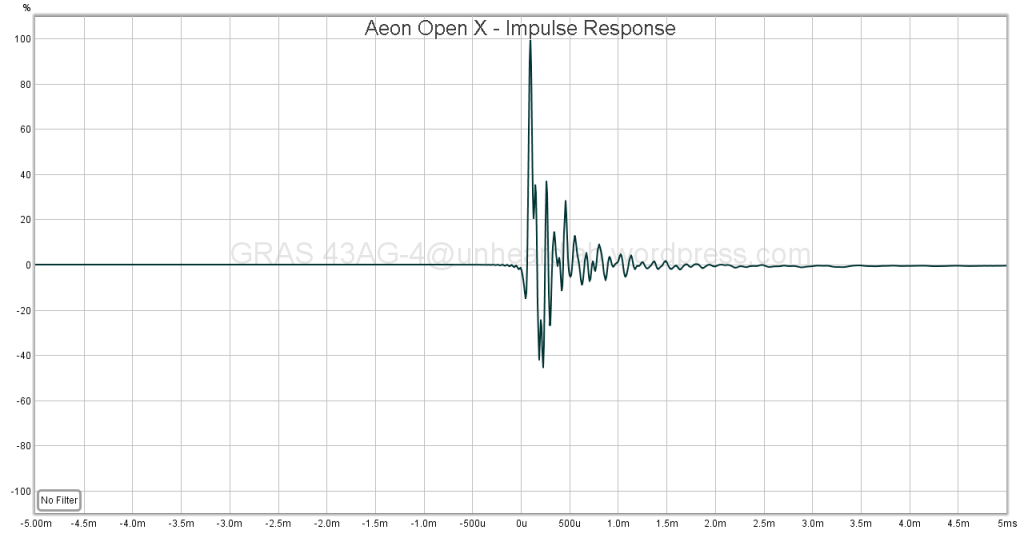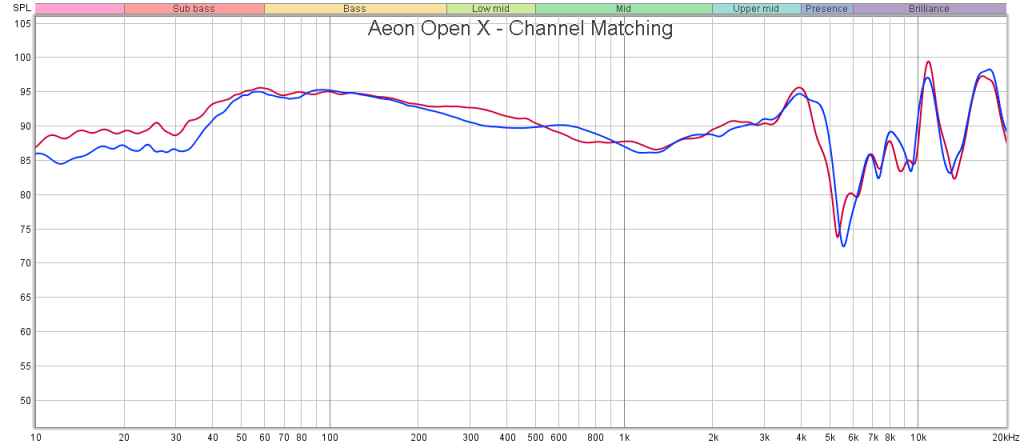
Intro:
Introducing the Dan Clark Audio Aeon Open X (US$499) , a unique looking one in the headphone world. The Aeon Open X boasts a ‘NiTinol memory metal headband’ and protein leather earpads, offering exceptional comfort and wearability. With a futuristic, avant-garde aesthetic, these headphones are sure to catch the eye. Those in the know are familiar with what DCA calls their ‘V-Planar’ drivers that ‘folds the diaphragm into a wave shape to increase its surface area and reduce distortion‘. The big question though, is how do they sound?
P.S. the review below is done without any tuning foam insert applied. The reason for this will be explained.
Overall impression:
This is… somewhat of a confusing sound profile. With an abundance of bass (more of mid-bass and upper-bass though) the midrange come across as constantly warm and fuzzy, affecting vocal clarity. Although the vocals are intimate, a degree of graininess is present, likely due to harmonic imbalance – there is an excess of treble energy from 5kHz and up, whereas there is a scoope in the lower-treble and upper-mids. Also, the upper treble tends to be sharp, resulting in a sound profile that despite appearing well-balanced on the graph, leaves something to be desired.

Tonal balance
Bass:
Bass performance of the Aeon Open X presents a notable departure from conventional preferences, such as the Harman Target, where the bass boost would generally concentrate in the subbass region for a cleaner and punchier sound. In this case, the bass elevation extends beyond mid-bass, resulting in a somewhat muddy character. This bass prominence also tends to bleed into the midrange, imbuing it with a warm and slightly cuppy quality.
Interestingly, kick drums here often evoke the sense of being in a compact room with reverberations, a character that may appeal to listeners seeking a ‘live house’ atmosphere across their studio-recorded music selection. With songs like ‘Rosanna’ from Toto the Aeon Open X may have difficulty presenting the fine details in the nimble and quick ghost notes from the drum. While not to everyone’s taste, the Aeon Open X offers an alternative bass experience for those who appreciate a more unorthodox approach – you either like it or hate it.
Mids:
Midrange here presents a curious blend of attributes. Ovearll, the mids assume a forward and fuller stance than a neutral profile might suggest. While seemingly adhere quite closely to the Target, the bass boost and treble emphasis regrettably impart noticeable colouration to the mids.
Male vocals, such as those of Leonard Cohen, are rendered enjoyably rich and full, yet the portrayal of female vocals, particularly those sing in the higher registers, can come across as somewhat grainy and at times dry. Although sibilance is not a prominent issue, the Aeon Open X may accentuate hissing sounds in poorly mastered recordings, adding an element of bite and excitement.
In comparison to those like the HD6XX or Sundara, the Aeon Open X falls short in delivering authentic vocal timbre. While the Sundara may sound thinner, its more neutral presentation ultimately offers a truer representation of vocals.
Treble:
The treble region in the Aeon Open X poses perhaps the most significant problems. Starting from 5kHz and persisting throughout the upper treble above 10kHz, there is a consistent elevation that often draws the listener’s attention away. Consequently, the treble appears artificially bright and unrefined, resulting in what could be described as an ‘analytical’ presentation.
One example of this issue is evident in Maika Loubté’s vocals in the introduction to ‘Show Me How’ (Kan Sano Remix), which come across as dry and sibilant. The disjointed nature of the sound can be attributed to the tuning, which emphasises contrasting presentations of the harmonics. Namely, whereas the upper-bass warmth and fuzziness evoke a ‘live house’ ambiance, the treble leans toward a drier, clinical presentation.
To address the treble brightness, the Aeon Open X includes several tuning filters in the package. Although these filters do enhance treble linearity and smoothness, I find them to simultaneously exacerbate the warmth and congestion in the mids.
Manual sine-sweep:
A manual sine sweep on my head revealed frequency peaks at 6khz, 8.5khz, 10.2khz, 12khz, 14.5khz. The 9khz dip did not come across to my ear. Note the perception of treble varies A LOT from person to person (especially from 10khz). You may or may not hear the same peaks or dips depending on headphone positioning, your own HRTF and/or headphone unit variation.
Other qualities:
- space and stage: Again, the listening experience conjures up a live house kind of feel, replete with bass ambience. On top of that the intimacy of the vocals results in a relatively small soundstage. In contrast, the Sundara offers a noticeably more open and airy stage.
- clarity and imaging: Commendable imaging capabilities, with a solid and well-defined front vocal presentation. Side imgaing is not great, but acceptable for the price point. Regrettably, clarity is compromised due to the bloated upper bass and lower mids, as well as the unrefined treble and harmonic imbalance that accentuates graininess.
- dynamics and impact: Despite the bass boost, the bass response leans towards the looser and slower side, with drums lacking the desired level of punch. Some have referred to this as having a kind of ‘one-note’ bass, and I can see why. The sense of contrast falls short when compared to the Sundara, which provides a more exciting listen. I also found that using tuning filters tend to further weaken dynamic qualities on the Aeon Open X.
Conclusion and value:
In conclusion, my experience with the Aeon Open X headphones has been underwhelming, especially when considering the praise surrounding the brand’s closed-back models, such as the Aeon Noire Closed which I demoed and liked. I was drawn to the Aeon Open X after seeing some frequency response measurements, and they do measure reasonably well. Unfortunately the listening experience was a lot less exciting, so again this is why you really need to listen to a headphone than just relying entirely on graphs.
With an asking price of US$499, the Aeon Open X IMHO struggles to justify its value in the face of stiff competition. For instance, the Sundara delivers a cleaner, more neutral, and technically superior sound at almost half the cost. In the same price range, the Edition XS and the Moondrop Venus also outperform the Aeon Open X in almost every category. However, if the unique design, aesthetics, and unconventional tuning of the Aeon Open X genuinely resonate with you, it may still be a viable option, as the tuning is quite niche. FWIW, the Aeon Open X does seem to have better build quality and perhaps reliability too than the Sundara and Edition XS.
Ultimately, while the Aeon Open X may not be the most competitive choice in its price range, it does offer an alternative sound profile and design for those seeking a distinct listening experience.
Pros: uniquely tuned to create a sense of live performance ambience; male vocals are deep and full; may be easy to EQ with an negative treble shelf filter;
Cons: generally underperforming technicalities; slightly grainy femal vocals; unrefined treble;
MEASUREMENTS
Extended Frequency Response:

note: averaged frequency response measurement shows bass extension cutoff is 10hz instead of 20hz on Squiglink, so as to fully capture frequencies which though may not outside of ‘audible range’, may be felt by our ears, bones and muscles and enhance the sense of ‘impact’.
Positional Variation:

note: this graph shows how the tonality might be affected when you wear the headphones differently on the head.
Leakage Test:

note: this graph demonstrates how a small leakage (simulated using thin-armed glasses) can result in FR change.
Impulse Response:

note: impulse response contains information about driver movment when a test tone is played. It also shows polarity.
Channel Matching:

note: channel matching graphs DOES NOT indicate sound profile. A special configuration is used to capture channel differences to mitigate the interference from positioning on rig, directional sensitivity, and the asymmetricity in GRAS pinnae design (legacy of the Kemar). The Left (blue) and Right (red) channels are measured on a flat plate coupler with IEC60318-4 ear simulator.
END OF ARTICLE
(next reviewed will be the Nan-7, I promise)
Feel free to leave a comment – I do read them!

One thought on “Review: Drop + DCA Aeon Open X”